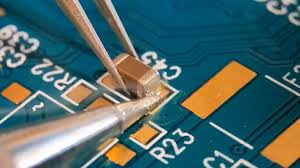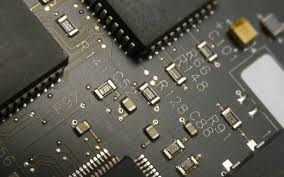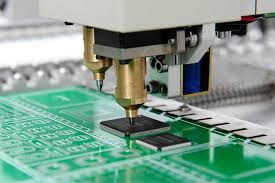Content Menu
● Understanding SMT Manufacturing
● Common Issues in SMT Manufacturing
>> Solder Joint Issues
>> Component Placement Errors
>> Solder Paste Issues
>> Thermal Management Problems
>> PCB Warping
● Troubleshooting Strategies
>> Root Cause Analysis
>> Continuous Improvement
>> Training and Development
>> Utilizing Technology
● Conclusion
● Related Questions
>> 1. What are the most common defects in SMT manufacturing?
>> 2. How can I improve solder joint quality in SMT?
>> 3. What tools are essential for troubleshooting SMT issues?
>> 4. How does temperature affect SMT manufacturing?
>> 5. What role does training play in SMT manufacturing?
Surface Mount Technology (SMT) has revolutionized the electronics manufacturing industry by allowing for the assembly of smaller, more complex devices. However, like any manufacturing process, SMT is not without its challenges. This article will explore common issues encountered in SMT manufacturing, provide troubleshooting strategies, and offer solutions to enhance production efficiency.

Understanding SMT Manufacturing
SMT involves mounting electronic components directly onto the surface of printed circuit boards (PCBs). This method contrasts with traditional through-hole technology, where components are inserted into holes in the PCB. The advantages of SMT include reduced size and weight of electronic devices, improved performance, and lower production costs. However, the complexity of the SMT process can lead to various issues that require careful troubleshooting.
Common Issues in SMT Manufacturing
Solder Joint Issues
Problem: Incomplete solder joints, solder bridges, or tombstoning can occur during the soldering process. These defects can lead to poor electrical connections and ultimately device failure.
Solution: Ensure proper solder paste deposition and stencil design. Optimize the reflow profile to ensure that the solder reaches the appropriate temperature for the correct duration. Regularly inspect solder joints using automated optical inspection (AOI) systems to catch defects early.
Component Placement Errors
Problem: Misalignment of components during placement can lead to functional failures. This issue is particularly prevalent with smaller components.
Solution: Utilize high-precision pick-and-place machines and regularly calibrate them. Implement vision systems that can verify component placement before soldering. Training operators on the importance of accurate placement can also reduce errors.
Solder Paste Issues
Problem: Problems with solder paste, such as improper viscosity or contamination, can lead to poor soldering results.
Solution: Monitor solder paste conditions closely, including temperature and humidity. Use paste that is appropriate for the specific components and PCB design. Regularly clean stencils and ensure that paste is applied uniformly.
Thermal Management Problems
Problem: Inadequate thermal management during the reflow process can cause components to overheat or not reach the required soldering temperature.
Solution: Optimize the reflow oven settings, including temperature profiles and conveyor speed. Conduct thermal profiling to ensure that all areas of the PCB reach the necessary temperatures. Use thermal cameras to monitor component temperatures during the process.

PCB Warping
Problem: Warping of PCBs can occur due to thermal stress during the soldering process, leading to misalignment of components.
Solution: Use PCBs made from materials that are less prone to warping. Implement proper cooling techniques after soldering to minimize thermal stress. Regularly inspect PCBs for warping before and after the assembly process.
Troubleshooting Strategies
Root Cause Analysis
Conducting a root cause analysis (RCA) is essential for identifying the underlying issues in SMT manufacturing. This process involves gathering data, analyzing defects, and determining the root causes of problems. Techniques such as the "5 Whys" or fishbone diagrams can be effective in this analysis.
Continuous Improvement
Implementing a continuous improvement program can help address recurring issues in SMT manufacturing. This approach involves regularly reviewing processes, gathering feedback from operators, and making incremental changes to improve efficiency and quality.
Training and Development
Investing in training for SMT manufacturing personnel is crucial. Regular training sessions can help operators stay updated on best practices, new technologies, and troubleshooting techniques. This knowledge can significantly reduce the occurrence of errors and improve overall production quality.
Utilizing Technology
Incorporating advanced technologies such as machine learning and artificial intelligence can enhance troubleshooting efforts. These technologies can analyze production data to identify patterns and predict potential issues before they occur.
Conclusion
Troubleshooting common issues in SMT manufacturing is essential for maintaining high-quality production and ensuring the reliability of electronic devices. By understanding the common problems, implementing effective solutions, and fostering a culture of continuous improvement, manufacturers can enhance their SMT processes. Regular training, root cause analysis, and the use of advanced technologies will further support these efforts, leading to more efficient and effective SMT manufacturing.

Related Questions
1. What are the most common defects in SMT manufacturing?
Common defects include solder joint issues, component misalignment, and solder paste problems.
2. How can I improve solder joint quality in SMT?
Ensure proper solder paste application, optimize reflow profiles, and conduct regular inspections.
3. What tools are essential for troubleshooting SMT issues?
Essential tools include AOI systems, thermal cameras, and high-precision pick-and-place machines.
4. How does temperature affect SMT manufacturing?
Temperature affects soldering quality; improper thermal management can lead to defects like tombstoning and incomplete joints.
5. What role does training play in SMT manufacturing?
Training helps operators understand best practices, reducing errors and improving overall production quality.




















